DJI Osmo Action 6 review: Is DJI’s most advanced action cam worth it?
A feature-packed, low-light-friendly action camera that pushes the series into pro territory with smarter optics and swappable lenses

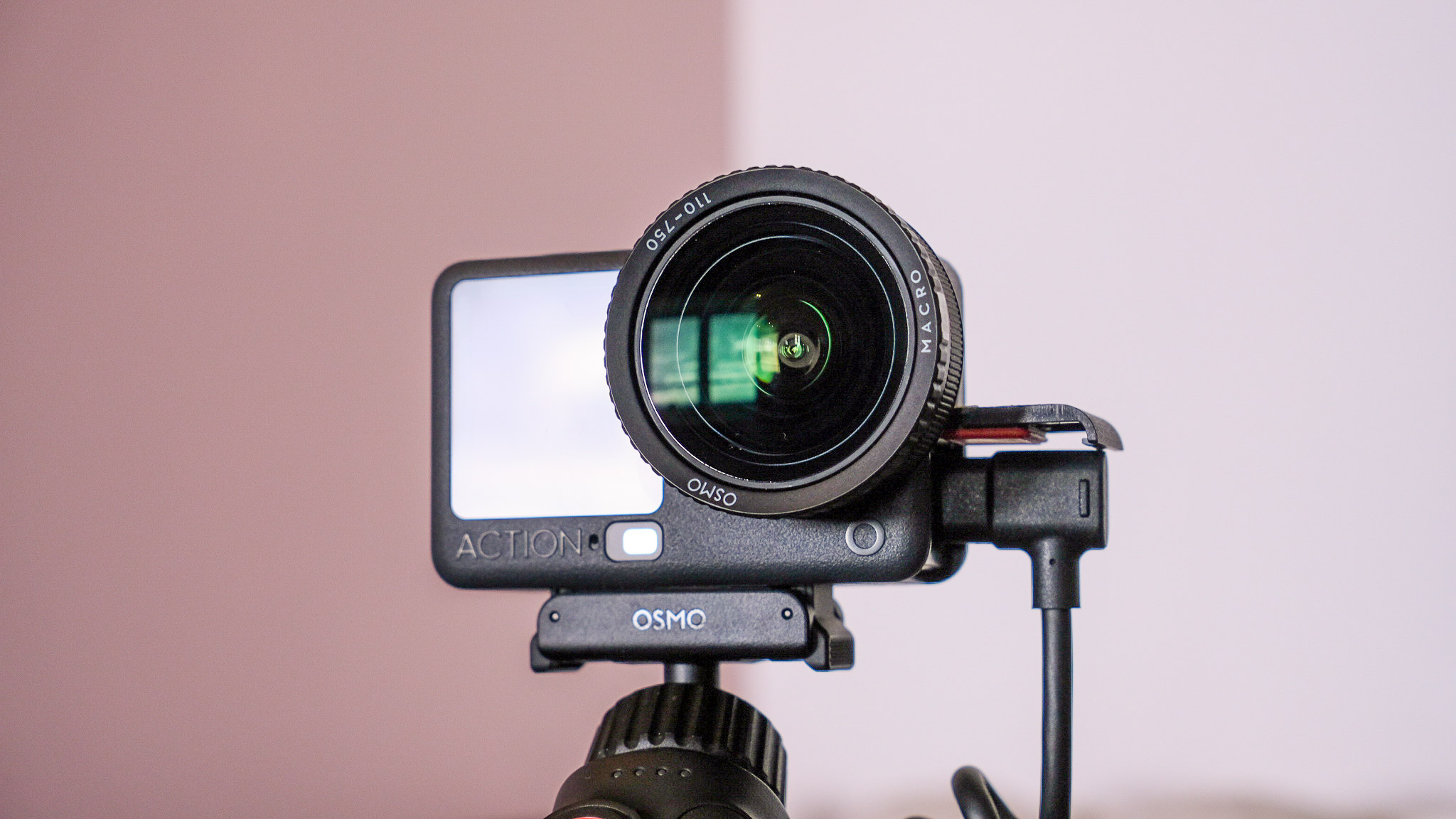
DJI’s Osmo Action 6 is a powerful step forward, pairing a new square sensor with a variable aperture that genuinely improves low-light shooting. Interchangeable lenses and robust design make it feel more professional, while battery life remains excellent. A smart, flexible and highly capable action camera for creators at every level.
-
+
Great low-light performance
-
+
Interchangeable lenses for more creative freedom
-
+
Variable aperture offers better low-light performance
-
+
Strong battery life
-
+
Excellent 4K-by-4K video
-
-
No focus peaking
-
-
Slightly heavier than predecessor
-
-
Macro focusing takes practice
-
-
Still no GPS
Why you can trust T3

The dust hasn’t even settled on the DJI Neo 2 launch, but the brand is back with another huge release: the successor of the DJI Osmo Action 5 Pro, which was released in September 2024. Despite the comparatively short gap between the two, the Osmo Action 6 includes a ton of exciting updates, including variable aperture, a first in action cams.
I don’t want to get ahead of myself, but it’s safe to say that the Action 6 is one of the best action cameras right now. I really enjoyed using its predecessor, and the new model is better in almost every way (apart from the battery life, which was impressive to begin with).
DJI took a leaf out of GoPro’s design book and introduced two new lens attachments – Marco Lens and FOV Boost Lens – aiming the Action 6 squarely at professional creators. It can do so because the brand-new DJI Nano offers an option for beginners, allowing the company to move the Action Series up a notch in terms of performance and features.
The variable aperture is quite a technical feat, but don’t expect footage to look like it was shot on a Fujifilm camera. The wider f/2.0 aperture lets in lots of light, which makes night shots look less fuzzy, but the depth of field isn’t on par with larger cameras, purely because of the difference in sensor and optical unit size – just trying to manage expectations here.
The Osmo Action 6 is an impressive piece of technology, and there is a lot to unpack here, so let’s get right to it!
DJI Osmo Action 6 review
Price and availability
The DJI Osmo Action 6 launched on 18 November 2025 at £329 for the Standard Combo and £415 for the Adventure Combo, and both configurations are available immediately through DJI and general retail channels. This keeps the camera firmly in the mid-to-upper price bracket for action cameras, but still below the highest flagship pricing seen elsewhere.
At present, the Osmo Action 5 Pro tends to retail for around £265 in the UK for the Standard Combo, reflecting the typical price drop that follows a new-generation launch. This places the older model noticeably below the Osmo Action 6, making it a more affordable option for buyers who do not need the latest features (while stocks last, of course).
Get all the latest news, reviews, deals and buying guides on gorgeous tech, home and active products from the T3 experts
In comparison, the GoPro Hero 13 Black currently sells for roughly £270 in the UK, depending on retailer promotions. This makes GoPro’s latest model slightly cheaper than the Osmo Action 6 at its launch RRP. Meanwhile, the Insta360 Ace Pro 2 sits higher than both at around £300, keeping it positioned as one of the more premium-priced alternatives on the market.
Design and build quality
DJI has refined the Osmo Action 6 into a sturdier, more technically ambitious camera while keeping the footprint familiar. The new model measures 72.8 × 47.2 × 33.1 mm and weighs 149 g, making it slightly heavier than the Action 5 Pro’s 145 g.
Much of this is due to the re-engineered lens housing, which now supports a variable aperture mechanism and a new family of interchangeable front lenses. The camera’s optical assembly has been redesigned from the ground up to accommodate these features, resulting in a denser, more robust front section than its predecessor.
The interchangeable lens system represents one of the biggest physical changes to the Action series to date. DJI now offers a Macro Lens that reduces the minimum focus distance to around 20 centimetres.
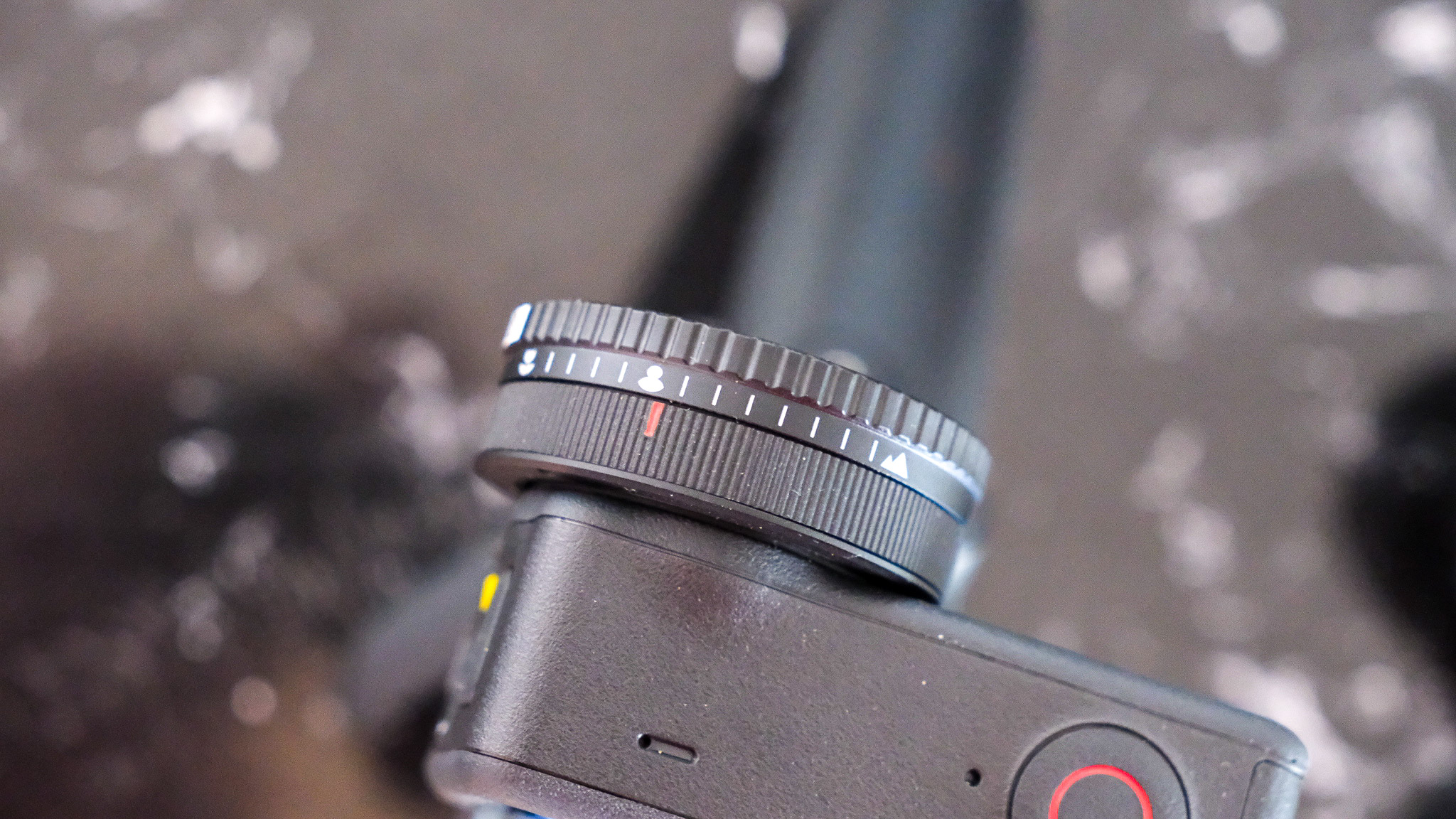
The Macro Lens' manual focus ring
The Macro Lens has a manual focus ring, which is a nice touch. However, there is no focus peaking on the Action 6 (yet), making it tricky to tell where the focus is using the action cam's small displays. The GoPro Hero 13 Black offers this feature, and I’m sure DJI will introduce it later via a software update. For now, though, you just have to hope that the focus is where you want it to be.
The other new add-on is the FOV Boost Lens, which expands the native field of view from 155° to 182°. Just like the Macro Lens, it can be switched without a tool. For comparison, the Hero 13 Black with the Max Lens Mod 2.0 delivers a maximum FOV of 177°, while Insta360’s Ace Pro 2 offers a maximum FOV of 157° with its standard lens.

FOV Boost Lens
The reinforced optical mount allows the variable aperture to operate reliably while maintaining airtight sealing for underwater use. This is especially important given the camera’s ability to withstand depths of up to 20 metres without a case.
The main body retains DJI’s familiar rectangular profile, but it feels more solid and better sealed. The waterproofing is supported by improved internal pressure-gauge integration for more accurate underwater depth and duration data.
The Action 6 is also cold-resistant down to –20°C (–4°F), and the strengthened chassis helps protect the new square 1/1.1-inch sensor inside, offering up to 13.5 stops of dynamic range. The dual touchscreens remain, but the rear display isn't flippable like the Insta360 Ace Pro 2.
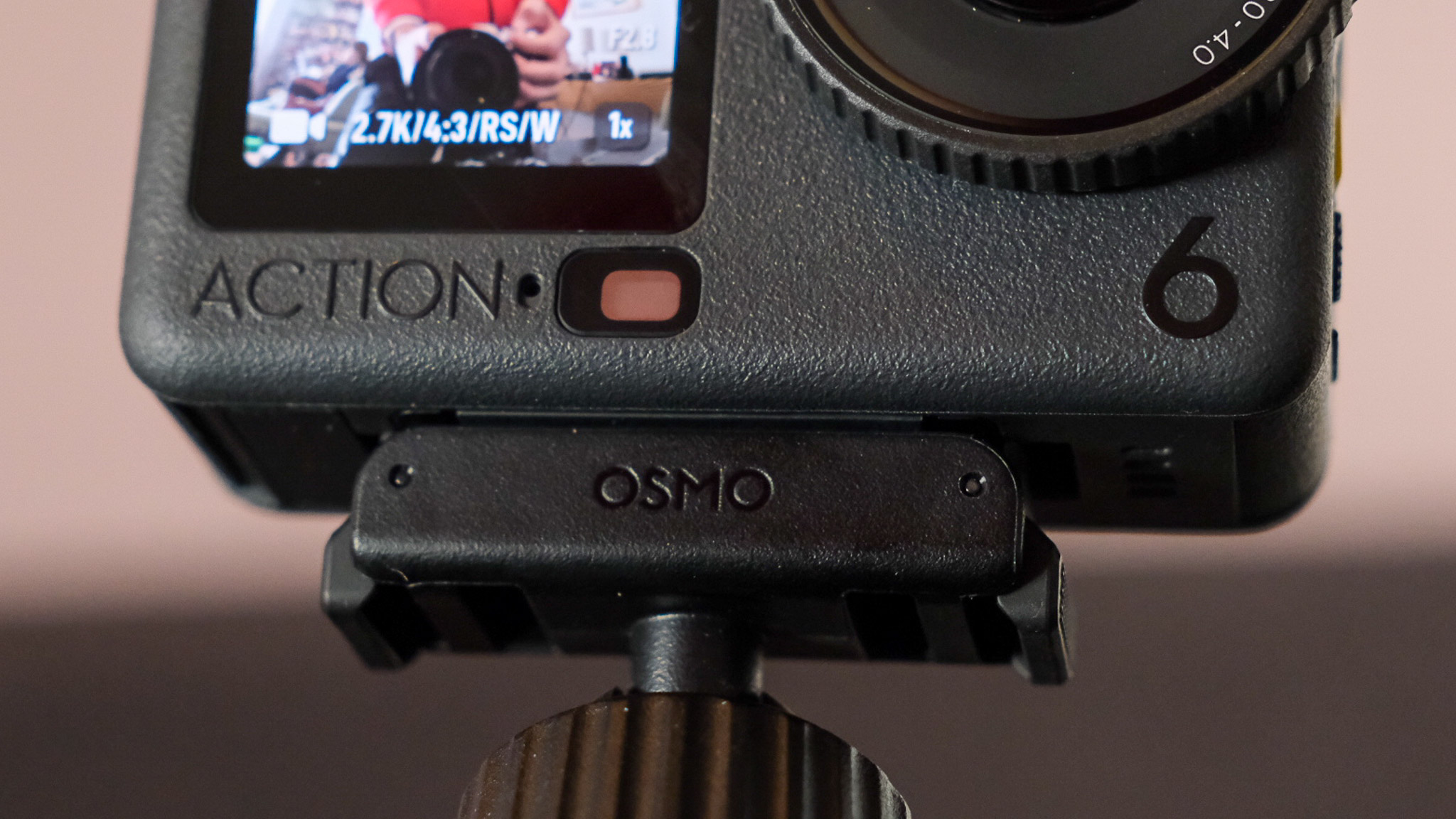
A significant physical improvement comes from the updated magnetic mounting system. The Action 5 Pro could only be attached to DJI’s quick-release mount in a single orientation, limiting how quickly you could reposition the camera.
The Action 6 now supports both forward and rearward installation, allowing you to flip the camera’s direction without changing mounts. This small mechanical change has a big impact on practical shooting, especially for activities like cycling and skiing, where rapid repositioning matters.
Features and video performance
The Osmo Action 6 represents DJI’s most ambitious leap in image performance, driven primarily by the introduction of a variable aperture, which fundamentally changes how an action camera behaves in challenging lighting. This new system allows the camera to switch between f/2.0 and f/4.0 depending on the scene, giving it far greater control over light intake and depth of field.
At its widest setting, f/2.0 doubles the incoming light compared with the Action 5 Pro, which immediately boosts low-light capability, reduces noise and allows the shutter to remain steady enough to maintain stabilisation.
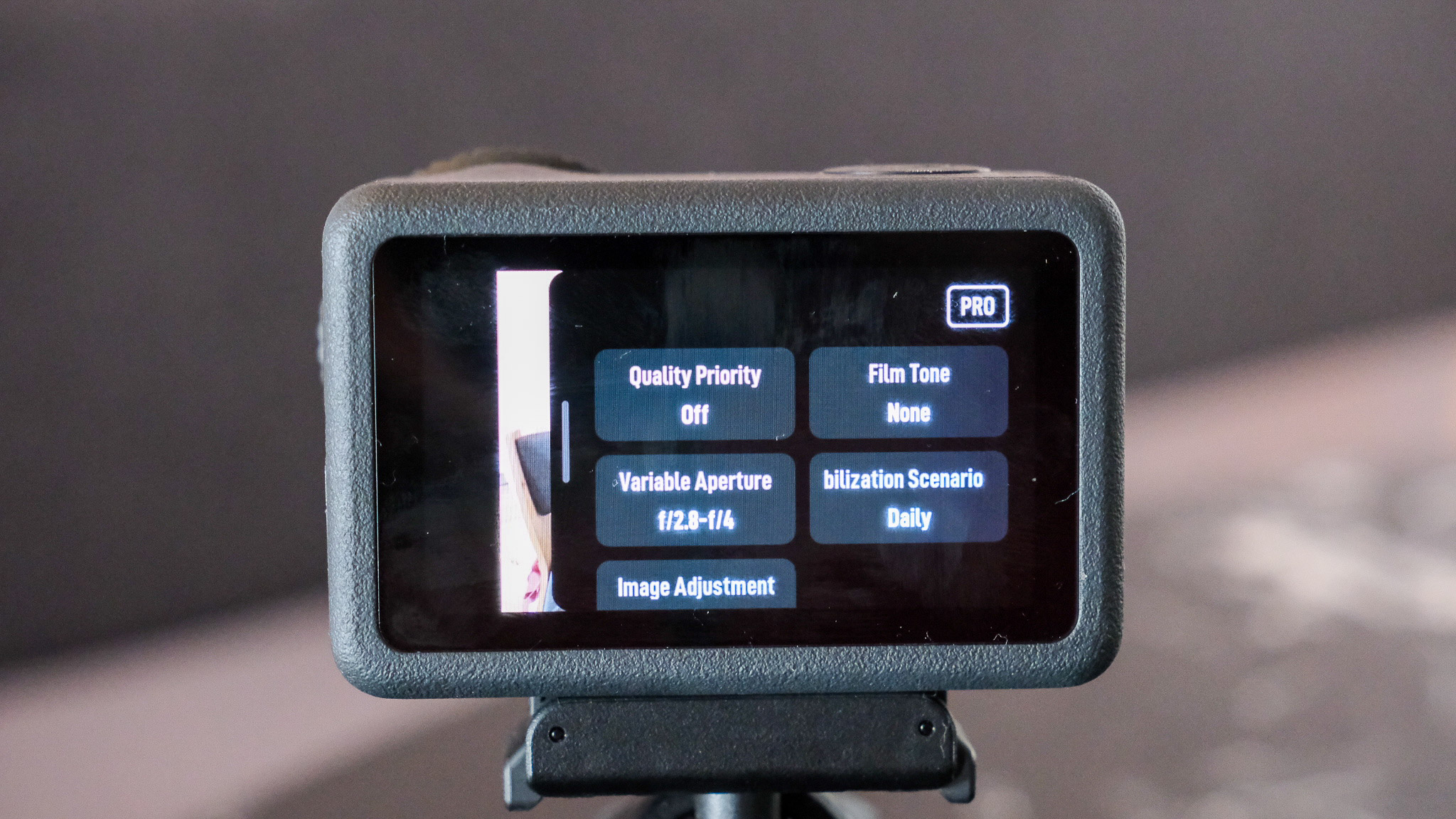
The DJI Osmo 360 has exceptional low-light capabilities, and the Osmo Action 6 inherited the ‘Supernight’ mode, which essentially turns night scenes into daylight. This works even better with the wider aperture, which lets in a ton of light.
The aperture also adapts dynamically. For vlog-style recording, the camera can tighten the aperture (up to f4.0) to keep the subject in focus at close range, further enhanced by the redesigned optical assembly that reduces the minimum focus distance to 20 centimetres at the aperture.
It’s hard not to talk a little bit about physics to understand what the different focal lengths mean. DJI says that in the case of its previous-generation action camera, which has a 1/1.3-inch sensor and an f/2.28 aperture, the design had already reached the physical limits of what was possible while maintaining an all-purpose depth-of-field control.
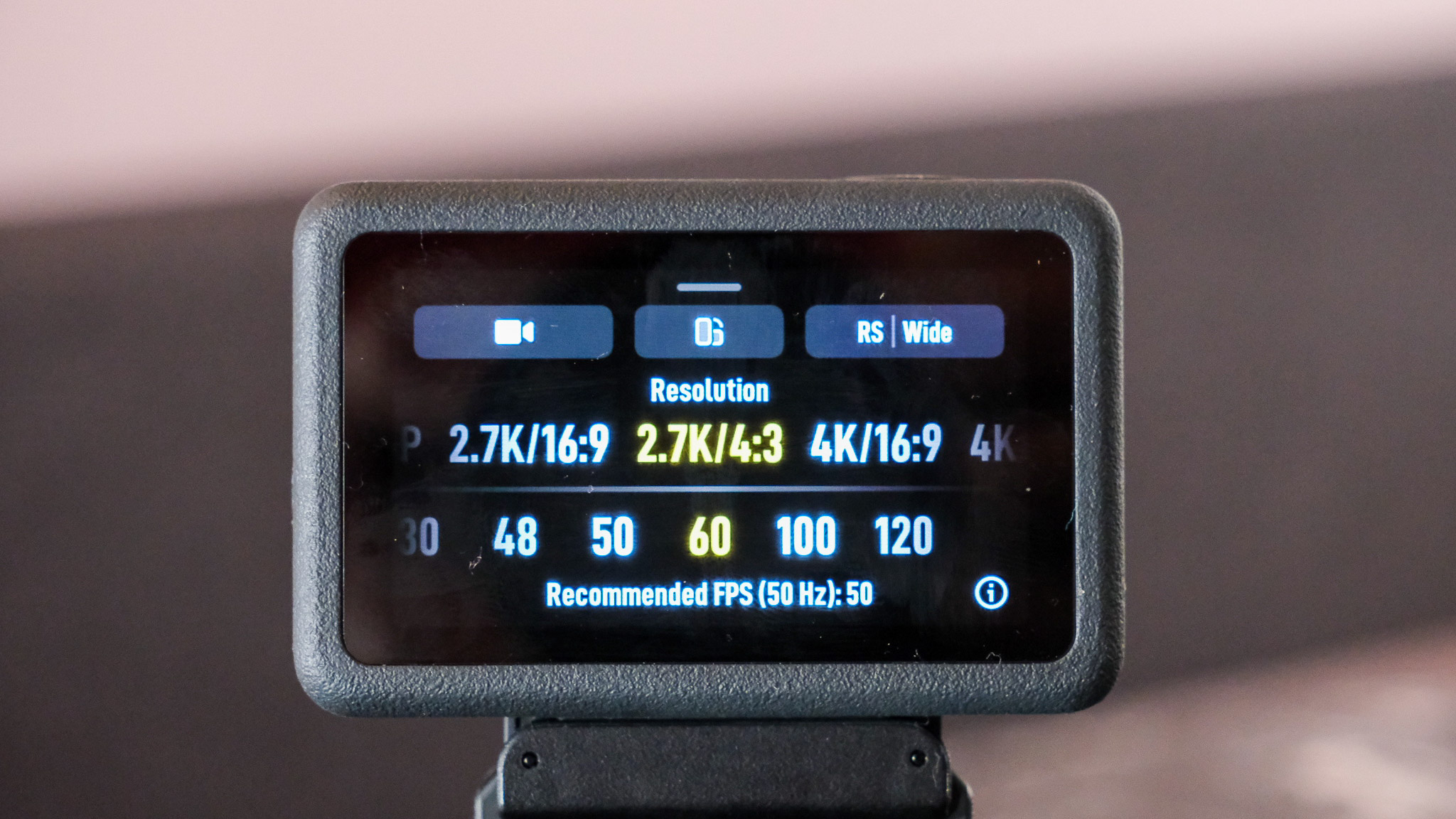
To achieve a larger aperture and maintain the relatively short focusing distance, the brand had to increase sensor size – otherwise, with the larger aperture, the focusing distance would have gone through the roof.
Dynamic switching allows the Action 6 to be the best of both worlds: let in more light in low-light conditions while retaining the relatively short minimum focusing distance in selfie mode, which is increasingly important in the age of social media and vlogging.
When switched to f/4.0, the camera can produce a ‘starburst’ effect around point light sources, thanks to the aperture blades. It’s not quite the smooth bokeh you get when you use a mirrorless camera or a DSLR, but it opens up more creative avenues, especially in low-light scenarios.
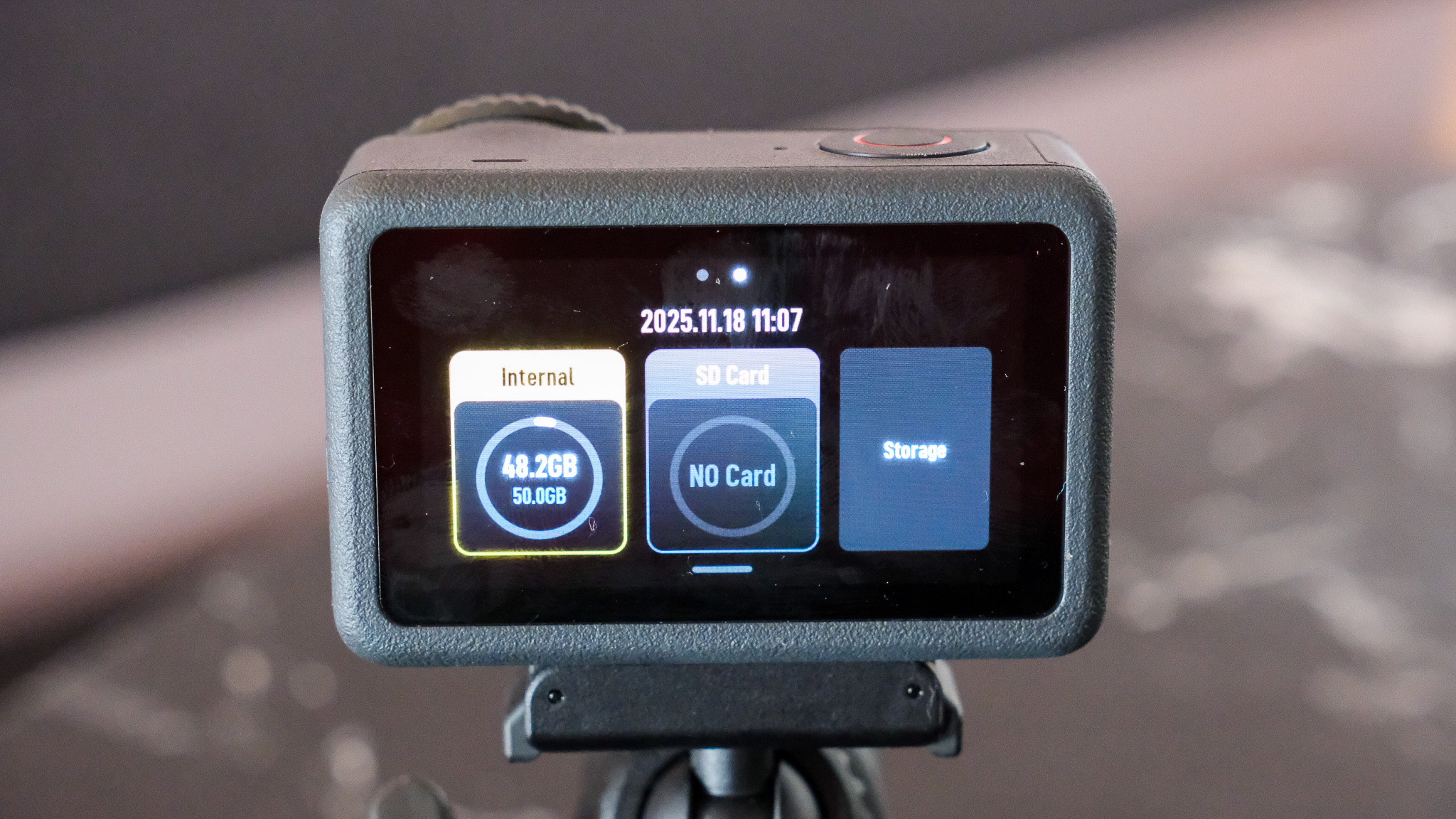
The larger square sensor enables 4K-by-4K recording, letting you shoot once and extract both landscape and portrait videos without sacrificing sharpness or field of view. The format also reduces cropping when using HorizonSteady and other stabilisation features, making high-motion footage look cleaner and more cinematic.
Slow-motion performance has also improved. The camera supports 4K/120fps recording and can generate extremely smooth 1080p super slow motion by intelligently interpolating frames. Additional features such as subject tracking, 2x lossless zoom, and natural-wide FOV processing round out the camera’s creative toolkit.
Battery life and charging
Despite introducing a variable-aperture system, a larger 1/1.1-inch square sensor, and a redesigned optical assembly, DJI has maintained battery endurance that rivals or exceeds that of competing models. Officially, the Osmo Action 6 achieves up to four hours of runtime under controlled conditions (1080p@24fps (16:9) video with RockSteady on).
The camera uses the same battery platform as the Action series, which keeps things simple for existing DJI users who already own multiple batteries. Retaining cross-compatibility here is a strategic benefit, especially for creators who rely on a collection of spares for long shooting sessions.

The new model’s runtime is particularly impressive considering the larger sensor and new processing demands; low-light performance improvements, 4K-by-4K recording and advanced stabilisation typically draw more power, yet DJI has managed to keep the battery endurance stable through the efficiency gains of its internal architecture.
The Action 6 can reach approximately 80 per cent charge in around 22 minutes using fast charging, which makes topping up between sessions far easier. The fast-charge rate means the camera can be revived quickly during transitions, allowing you to continue recording without worrying about long recharge times.
The Multifunctional Battery Case is included with the Adventure Combo and can further speed up charging. Like before, this accessory allows users to charge multiple batteries simultaneously and safely store them in cold environments where battery performance often suffers.
Verdict
The Osmo Action 6 feels like the moment DJI’s action-camera ambitions finally click into place. The variable aperture is the headline feature, and while it doesn’t magically turn an action camera into a mirrorless rig, it delivers genuinely useful gains in low-light performance and creative flexibility. Paired with the new square sensor, 4K-by-4K recording and improved minimum focusing distance, the Action 6 produces footage that looks cleaner and more adaptable than anything the series has offered so far.

The addition of interchangeable front lenses pushes the camera closer to a professional tool, and the redesigned mounting system and reinforced housing give the whole unit a more robust, polished feel. Battery life remains strong despite the increased processing demands, and fast charging makes it easy to keep the camera rolling during busy shoot days.
It’s not perfect. The lack of focus peaking holds back the Macro Lens accessory, and some creators may still lean toward GoPro for its mature accessory ecosystem. But as a complete package, the Osmo Action 6 is an outstanding step forward. DJI has built a camera that’s not just incrementally better than the Action 5 Pro, but meaningfully more capable, versatile and fun to use. This is one of the best action cameras you can buy right now.

Matt Kollat is a journalist and content creator who works for T3.com and its magazine counterpart as an Active Editor. His areas of expertise include wearables, drones, fitness equipment, nutrition and outdoor gear. He joined T3 in 2019. His byline appears in several publications, including Techradar and Fit&Well, and more. Matt also collaborated with other content creators (e.g. Garage Gym Reviews) and judged many awards, such as the European Specialist Sports Nutrition Alliance's ESSNawards. When he isn't working out, running or cycling, you'll find him roaming the countryside and trying out new podcasting and content creation equipment.
You must confirm your public display name before commenting
Please logout and then login again, you will then be prompted to enter your display name.